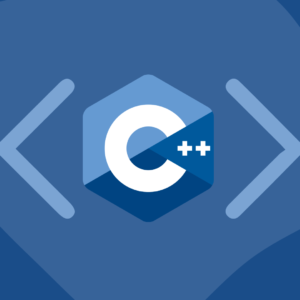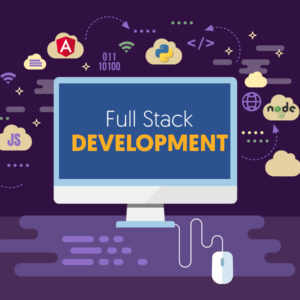SYLLABUS
Module 01 – Data Science, Data Analytics, Artificial Intelligence, ML, & DL
- Introduction
- The Data Science Domain
- Data Science, Data Analytics, and Machine Learning, Deep Learning, AI – Overlaps
- Data Science Demystified
- Data Science and Business Strategy
- Successful Companies Using Data Science
- Travel Industry
- Retail
- E-commerce and Crime Agencies
- Analytical Platforms Across Industries
- Key Takeaways.
Module 02 – Data Science & AI in Different Sectors
- Introduction
- AI & ML for Products or Services
- How Google Uses Artificial Intelligence and Data Science
- How LinkedIn Uses Artificial Intelligence and Data Science
- How Amazon Uses Artificial Intelligence and Data Science
- Netflix: Using Artificial Intelligence and Data Science to Drive Engagement
- Media and Entertainment Industry
- Education Industry
- Healthcare Industry
- Government
- Weather Forecasting
- Key Takeaways
Module 03 – Machine Learning-Introduction
- Introduction of Machine Learning
- Evolution of Machine Learning
- Application of Machine Learning
Module 04 – Probability and Stats
- Central tendency theorem
- Probability
- Bayes Theorem
- Types of distribution
Module 05 – Machine Learning-Fundamental
- Difference between Traditional Programming and ML Programming
- Requirements for Machine Learning Practical Implementation
- Required software and tools for Machine Learning implementations
- Setup Anaconda
- Installation of PyCharm or Spyder or Jupyter
- Configure PyCharm/Spyder/Jupyter with Anaconda
Module 06 – Python Programming Foundation for Data Science
- Introduction
- Variables
- Data Types with Python
- Assisted Practice: Data Types in Python
- Keywords and Identifiers
- Expressions
- Basic Operators
- Operators in Python
- Functions
- Search for a Specific Element from a Sorted List
- Create a Banking System Using Functions
- String Operations
- String Operations in Python
- Tuples
- Tuples in Python
- Lists
- Lists in Python
- Sets
- Sets in Python
- Dictionaries
- Dictionary in Python
- Dictionary and its Operations
- Conditions and Branching
- Check the Scores of a Course
- While Loop
- Find Even Digit Numbers
- Fibonacci Series Using While Loop
- For Loop
- Calculate the Number of Letters and Digits
- Create a Pyramid of Stars
- Break and Continue Statements
Module 07 – File handling and Package handling using Python
- Learning Objectives
- File Handling
- File Opening and Closing
- Reading and Writing Files
- Directories in File Handling
- Assisted Practice: File Handling
- Modules and Packages
- Assisted Practice: Package Handling
Module 08 – Mathematical Computing using NumPy
- Learning objectives
- NumPy
- Create and Print Numpy Arrays
- Operations
- Executing Basic Operations in Numpy Array
- Performing Operations Using Numpy Array
- Demonstrate the Use of Copy and Use
- Manipulate the Shape of an Array
Module 09 – Data Manipulation with Pandas
- Learning Objectives
- Introduction to Pandas
- Data Structures
- Create Pandas Series
- DataFrame
- Create Pandas DataFrames
- Missing Values
- Handle Missing Values
- Various Data Operations
- Data Operations in Pandas DataFrame
Module 10 – Data visualization with Python
- Learning objectives
- Data Visualization
- Considerations of Data Visualization
- Factors of Data Visualization
- Python Libraries
- Create Your First Plot Using Matplotlib
- Line Properties
- Create a Line Plot for Football Analytics
- Multiple Plots and Subplots
- Create a Plot with Annotation
- Create Multiple Plots to Analyze the Skills of the Players
- Create Multiple Subplots Using plt.subplots
- Types of plots
- Create a Stacked Histogram
- Create a Scatter Plot of Pretest scores and Posttest Scores
- Create a Pie Chart
- Create a Bar Chart
- Create Box Plots
- Create a Waffle Chart
- Analyzing Variables Individually
- Key Takeaways
Module 11 – Steps of Machine Learning Implementations
- Types of Machine Learning
- Labelled Data and Unlabeled Data
- Concept of Supervised Machine Learning
- Concept of Unsupervised Machine Learning
- Steps of Machine Learning
- Concept of Collecting the historic training Data for ML
- Concept of Preprocess data for Machine Learning
- Concept of Train the ML model
- Concept of Test the ML Algorithm
- Concept of using the ML Algorithm
Module 12 – Data Collection for Machine Learning
- Introduction
- Types of Data collection- Offline Data and Online Data
- Practical implementations of Reading the offline dataset using Numpy
- Practical implementations of Reading the online dataset using Numpy
- Practical implementations of Reading the offline dataset using Pandas
- Practical implementations of Reading the online iris dataset using Pandas
Module 13 – Concept of Supervise & Unsupervised Machine Learning
- Introduction
- Types of Machine Learning
- Labelled Data and Unlabeled Data
- Concept of Supervised Machine Learning
- Concept of Unsupervised Machine Learning
- Regression and Classification
- Linear Regression and Logistic Regression
Module 14 – Data Plotting for Machine Learning
- Introduction
- Concept of Univariate plots
- Univariate Histogram Plots.
- Univariate Density Plots.
- Univariate Box and Whisker Plots.
- Concept of Multivariate plots
- Correlation Matrix Plot
- Scatter Matrix Plot
Module 15 – Practical implementation of Supervised ML Algorithm
- Introduction
- Implementation Foundation of Supervised Machine Learning Algorithms
- Regression and Classification
- Linear Regression and Logistic Regression
- Practical implementations of Supervised ML Algorithms- Linear Regression
- Practical implementations of Supervised ML Algorithms- Logistic Regression
- Concept of Sigmoid Function
- k-NN Algorithm
- Naive Bayes Classifiers
- Decision trees and etc.
- Support vector machines
- Introduction to concepts of forecasting
- Forecasting: ARIMA
- Forecasting: Hotlz Winters
- Dimension Reduction
- Ensemble learning
- Bagging (Random forest)
- Gradient boosting
Module 16 – Practical implementation of Unsupervised Machine Learning
- Introduction
- Concepts and Steps of Unsupervised Machine Learning Algorithm
- Concept of Clustering,
- Practical implementations of Machine Learning Unsupervised Algorithms
- K-Means Clustering.
Module 17 – Prepare Data for ML using Data Transformation Methods
- Introduction
- Need for Data Pre-processing
- Data Transforms Steps
- Types of Data Transformation Methods
- Rescale Data
- Standardize Data
- Normalize Data
- Binarize Data
Module 18 – Feature Selection for Machine Learning
- Introduction
- Feature Selection
- Univariate Feature Selection
- Recursive Feature Elimination
- Principal Component Analysis
- Feature Selection based on Importance
Module 19 – Data Resampling Methods for Evaluation of ML Models
- Introduction
- Evaluate Machine Learning Algorithms
- Split into Train and Test Sets
- K-fold Cross Validation
- Leave One Out Cross Validation
- Repeated Random Test-Train Splits
- What Techniques to Use When
Module 20 – Machine Learning Algorithm Performance Evaluation Metrics
- Introduction
- Algorithm Evaluation Metrics
- Logistic Regression Algorithm Performance Evaluation Metrics
- Classification Accuracy (Default).
- Logarithmic Loss.
- Area Under ROC Curve (AUC).
- Confusion Matrix.
- Classification Report.
- Linear Regression Algorithm Performance Evaluation Metrics
- Mean Absolute Error.
- Mean Squared Error.
- R2 Error
Module 21 – Spot-Check Machine Learning Algorithms
- Concept of Algorithm Spot-Checking
- Algorithms Overview
- Linear Machine Learning Algorithms Spot-check
- Nonlinear Machine Learning Algorithms Spot-check
Module 22 – Save and Load Machine Learning Models
- Introduction
- Finalize Your Model with pickle
- Finalize Your Model with Joblib
Module 23 – Introduction to Deep Learning
- A revolution in Artificial Intelligence
- Limitations of Machine Learning
- What is Deep Learning?
- Advantage of Deep Learning over Machine learning
Module 24 – Introduction to Neural Networks
- How Deep Learning Works?
- Introduction to Neural Networks
- Neural Network Architecture
- The Neuron
- Training a Perceptron
- Concept of Gradient Descent
- Stochastic Gradient Descent (SDG)
- Activation Functions
- Neural Network Layers
Module 25 – Deep dive into ANN with Tensor Flow
- Understand limitations of a Single Perceptron
- Deepening the network
- Tensor Flow code-basics
- Tensor flow data types
- CPU vs GPU vs TPU
- Tensor flow methods
- Overfitting and Regularization
- Debugging Neural Networks
- Visualizing NN using Tensor Flow
- The MNIST Dataset
- Coding MNIST NN
- Linear Regression example revisited
- Generalization, Overfitting, Underfitting
Module 26 – Keras API
- Keras API
- How to compose Models using Keras
- Sequential Composition
- Neural Network Layers with Keras & TensorFlow
Module 27 – Convolutional Neural Networks (CNN)
- Introduction
- Images and Pixels
- How humans recognize images
- Convolutional Neural Networks
- ConvNet Architecture
- Strides and Zero Padding
- Max Pooling and ReLU activations
- Dropout
- Coding Deep ConvNets demo
Module 28 – Computer Vision (CV)
- Introduction to image processing and computer vision
- Convolutional features for visual recognition
- Object detection
- Object tracking and action recognition
- Image segmentation and synthesis
Module 29 – Recurrent Neural Network (RNN)
- Introduction of Recurrent Neural Network
- Architecture of RNN
- Applications of RNN
Module 30 – Natural Language Processing (NLP)
- Introduction of NLP
- Intro to text mining and applications
- Basics of NLP (POS, entity recognition)
- Applications of Regular expression
- Sentiment Analysis
- Topic Modelling
- Clustering in Text documents
Module 31 – Tools for AI
- Introduction to SQL on MySQL
- Introduction to NoSQL on MongoDB
- Introduction to Docker and Kubernetes
- Data lake and centralization strategy
- Using cloud-specific services for AI solution
- Creating and deploying API
- Introduction to ELK Stack
- Introduction to Spark and Distributed Computing
Module 32 – Deployment of AI Solutions
- Unit and System testing
- Model Lifecycle management
- Integration with Dev Ops and relevant architectures
- Retraining Pipeline
- Deployment of AI on Cloud
- AI Ops Best Practices
Module 33 – Mini-Project
- Project Descriptions
- Datasets
- Coding & Implementations
- Performance Evaluation







